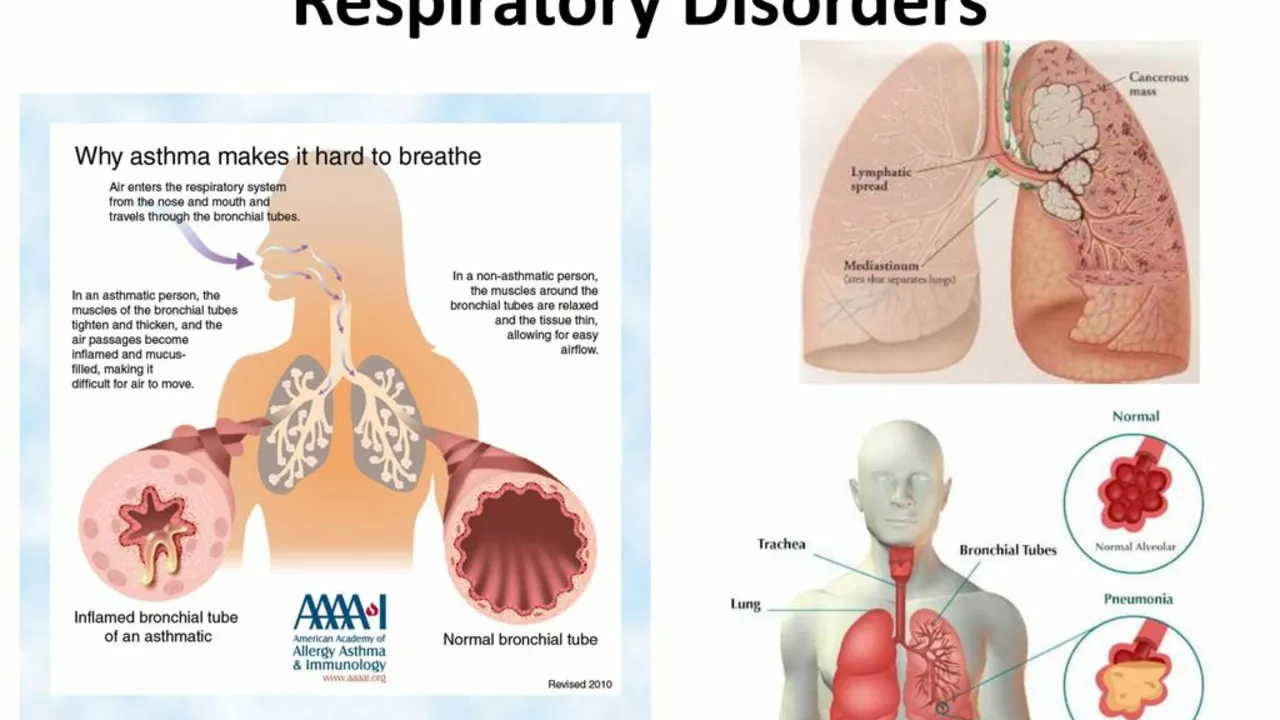Respiratory issues: Practical help for asthma, sleep apnea, and breathing trouble
Millions struggle with breathing problems every day. If you have asthma, suspected sleep apnea, or just feel short of breath during activity, knowing a few clear steps can make life easier fast. Below are simple, practical tips you can try now and the signs that mean you should see a clinician.
Breathing techniques that help
Simple breathing exercises often reduce symptoms and anxiety. Diaphragmatic breathing (belly breathing) strengthens your main breathing muscle and lowers the feeling of breathlessness. Try a slow count: inhale for 4, pause 1, exhale for 6—repeat for a few minutes. Pursed-lip breathing helps during episodes of tight chest—breathe in through the nose, exhale slowly through pursed lips to lengthen the out-breath.
The Buteyko method and gentle yoga breathing routines can cut down symptoms for some people. If you want step-by-step guidance, our article "Natural Asthma Relief: Best Breathing Techniques and Supplements Backed by Science" covers how to practice these methods and what the research says.
When to get medical help & common treatment options
Shortness of breath that comes on suddenly, is severe, or is accompanied by chest pain, fainting, or blue lips needs immediate emergency care. For ongoing problems, start with your primary care provider or a lung specialist. For asthma, inhaled rescue medicines (short-acting bronchodilators) ease attacks, while daily inhaled corticosteroids reduce inflammation and flare-ups. Never stop or change prescribed inhalers without talking to your clinician.
Sleep apnea often shows up as loud snoring, gasping during sleep, and daytime sleepiness. CPAP therapy remains the most common effective treatment. If you’re exploring options from telehealth or an online pharmacy, see our piece "Online Pharmacy Sleep Apnea Treatment in Hamilton" for practical steps on how to evaluate providers and equipment options safely.
Medications and supplements can help but also interact with other drugs. For example, over-the-counter pain relievers like acetaminophen are common, and our article "Acetaminophen: How to Use It Safely" explains safe use and liver-risk basics—handy if you take multiple medicines.
Small daily moves matter: avoid known triggers (smoke, strong fumes, cold air), keep indoor air clean with a basic filter, stay up to date with vaccines like flu and COVID shots, and manage weight and allergies. If exercise brings on symptoms, a gradual, supervised plan with your provider or a respiratory therapist can help you build tolerance safely.
Want quick reading? Start with our asthma breathing guide and the sleep apnea article mentioned above. If you’re comparing online pharmacies or need product reviews, search site posts on treatment options and trusted suppliers. And remember: clear breathing often starts with small habits plus the right medical plan—if something feels off, get checked.
Hypophosphatemia and Respiratory Issues: What You Need to Know
In my recent blog post, I explored the connection between hypophosphatemia and respiratory issues. Hypophosphatemia is a condition marked by low phosphate levels in the blood, which can cause various health problems, including respiratory distress. It's essential to know that severe hypophosphatemia can weaken our respiratory muscles leading to difficulty in breathing. We also discussed how proper diagnosis and treatment can effectively manage these conditions. It's a vital read for anyone looking to broaden their understanding of the link between our respiratory health and our body's mineral balance.
View More
